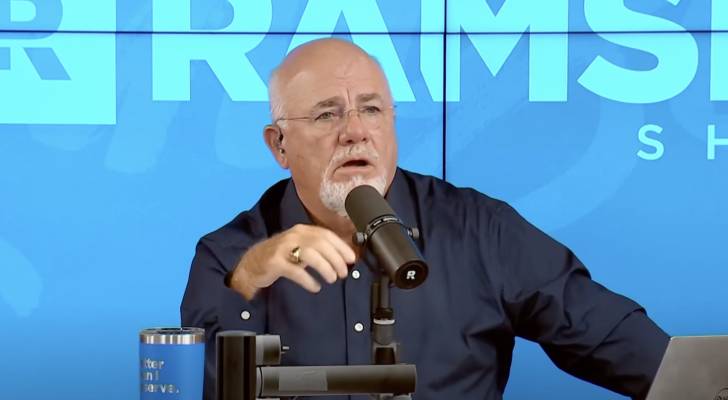
Amber and her husband have successfully reduced their non-housing debt burden from $160,000 to $119,000 in just one year.
Don’t miss
- I’m 49 years old and have nothing saved for retirement — what should I do? Don’t panic. Here are 5 of the easiest ways you can catch up (and fast)
- You’re probably already overpaying for this 1 ‘must-have’ expense — and thanks to Trump’s tariffs, your monthly bill could soar even higher. Here’s how 2 minutes can protect your wallet right now
- Gain potential quarterly income through this $1B private real estate fund — even if you’re not a millionaire. Here’s how to get started with as little as $10
For most people, that would be a massive achievement. But for personal finance celebrity Dave Ramsey, this rate of progress and the outstanding debt burden is “embarrassing.”
That’s because the Los Angeles-based couple both work as engineers and earn a combined annual income of $300,000, much higher than the median household income for the city, which is $87,760.
Surprisingly, their monthly mortgage payments are just $5,000, which means the house isn’t the root cause of their financial trouble.
“It takes $60,000 a year to pay your house payment, so if you were to live on $200,000, you would be debt-free in a little over a year,” Ramsey told her on a recent episode of “The Ramsey Show.” “Kind of sounds absurd when I say it that way, doesn’t it? Where the flip are you people spending money?”
Digging into the details, he discovered how easy it is for high-income households to slip into bad spending habits and unnecessary debt.
Reckless spending habits
Since the monthly mortgage payments are not outrageous, Ramsey suspected Amber and her husband have a reckless spending problem that’s preventing them from paying off their debt. “Your lifestyle is eating you alive somewhere,” he said.
Amber said they had several unexpected expenses recently, like needing a new AC, furnace and fence around their property, and she also admitted they like to take vacations since their work is taxing. Her husband even had to sell one of his cars to pay off a contractor to fix a leak they had.
But Ramsey wasn’t convinced. “A furnace doesn’t throw this thing off as far as it’s off. We’re off $100,000 a year.”
Their situation highlights how many high-income households succumb to lifestyle creep. About 36% of Americans who earn more than $200,000 annually report living paycheck to paycheck, according to a 2024 study conducted by PYMNTS.
Read more: Want an extra $1,300,000 when you retire? Dave Ramsey says this 7-step plan ‘works every single time’ to kill debt, get rich in America — and that ‘anyone’ can do it
Despite their high income, many individuals in this bracket seem to struggle to build savings or get ahead financially.
Among these high earners, 17% cited poor financial habits as the main reason they do not save.
To manage the debt, Amber said she’s considering a Home Equity Line of Credit (HELOC) that could consolidate the remaining $119,000 balance. However, Ramsey is convinced that’s a bad idea.
Debt consolidation is a "con"
Consolidating consumer debt with a HELOC may be considered a savvy financial move by some. After all, HELOCs tend to have lower interest rates than many forms of consumer debt and it’s easier for most people to make a single debt payment rather than manage multiple different forms of credit every month.
However, Ramsey isn’t a fan of this financial engineering maneuver. “No you should not try to borrow your way out of debt,” he bluntly told Amber. “It’s a con, because you don’t change a person in your mirror, your habits are still there. You’re going to go right back into debt.”
Instead of consolidating, he recommended cutting back on spending to start setting aside $8,000 a month to pay off the debt.
Although it’s difficult to shift spending habits overnight, if Amber and her husband can manage to do so they might be able to achieve debt-free status in just 15 months.
What to read next
- Don’t have the cash to pay Uncle Sam in 2025? You may already be eligible for a ‘streamlined’ handshake with the IRS — here’s how it works and how it can potentially save you thousands
- Robert Kiyosaki warns of a ‘Greater Depression’ coming to the US — with millions of Americans going poor. But he says these 2 ‘easy-money’ assets will bring in ‘great wealth’. How to get in now
- Here are 5 ‘must have’ items that Americans (almost) always overpay for — and very quickly regret. How many are hurting you?
This article provides information only and should not be construed as advice. It is provided without warranty of any kind.